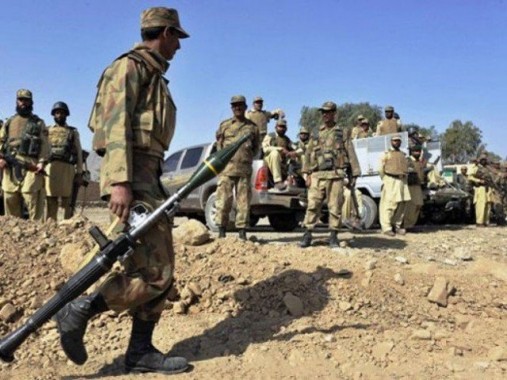
ISLAMABAD: It is a scenic, but inaccessible and sparsely populated area, yet Tirah Valley holds enough strategic importance to be the site of a significant battle between the Lashkar-e-Islam extremist group and its Taliban cohorts on one side and the Pakistan Army on the other.
For the militants, Tirah Valley has served as a useful staging post because, until recently, there was no military presence on the ground there. For the government, controlling the valley means blocking a major passage for cross-border movement to and from Afghanistan, which would rob the Taliban of a major hideout and would allow Islamabad to convey its commitment to stopping cross-border terrorist activity to both Washington and its new allies in Kabul.
People familiar with the difficult terrain say that the militants easily cross the border into Afghanistan whenever the Pakistani military mounts pressure on them. Similarly, Afghanistan-based militants enter the valley using parts of Nangarhar’s Dur Baba and Nazyan districts.
This route between the two countries was also used by anti-Soviet fighters in Afghanistan during the 1980s, said one former commander of Gulbuddin Hekmatyar’s Hizb-e-Isalmi Afghanistan. “Afghan jihadi groups would use Tirah Valley to transport arms using mules from Landi Kotal subdivision of Khyber Agency to fight the Soviets,” he told The Express Tribune on the condition of anonymity.
Neither Islamabad nor Kabul has been able to assert their writ over either side of the border in Tirah Valley, making it a useful area for militants to use as a conduit. This route had previously not been a problem because it had been controlled by the pro-government Ansar-ul-Islam militant group.
The Taliban, who usually avoid alliances with other militant groups, formed an alliance with the Lashkar-e-Islam, led by Mangal Bagh, to drive out the Ansar-ul-Islam from Tirah so that it could be used as a safe haven after the military drove them out from previous such havens in North and South Waziristan. The area is now used by both militant groups to expand their influence over other parts of the tribal districts as well as Peshawar.
“Militarily, Tirah Valley is the key for us and our presence there is important for our fighters,” Taliban spokesman Ehsanullah Ehsan had said in a previous interview with The Express Tribune.
The importance of Tirah to the Taliban can be judged from their willingness to engage in a brutal battle against the Ansar-ul-Islam to take over the valley. The Taliban sent over its chief in the Mohmand Agency, Omar Khalid Khorasani, to lead their fighters in the valley. Khorasani was a replacement for Tariq Afridi, a former Taliban commander in Darra, who was killed in mysterious circumstances in September 2013.
Tirah’s strategic importance is that it has three entry points: to Orakzai agency, to Zakhakhel and to Bara, near Peshawar. These entry points make the valley difficult to control, which made the battle for Tirah especially bloody. The Ansar-ul-Islam held on for a while against the Taliban, supplemented by airpower from the Pakistan Air Force, but the army, which previously controlled some hilltops, was not able to move in to take advantage of the Ansar-ul-Islam’s ground presence in the valley itself before they were routed by the Taliban.
The ferocity of the fighting has resulted in a mass exodus of people from the valley, most of whom now live in refugee camps in other parts of the country. As a result of the virtual emptying of the valley, the government is now more willing to use airpower than in the past.
Tirah had also been a major hideout for Taliban militants fleeing military operations in Swat and other tribal regions. In 2010, a US spy aircraft fired missiles into Tirah valley and killed the most dangerous TTP Swat commander, Ibn-e-Amin, there along with some other militants. Ibn-e-Amin, an explosives expert, had been involved in reconciliation between the Taliban and the Lashkar-e-Islam.





